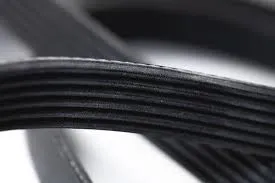- Arabic
- French
- Russian
- Spanish
- Portuguese
- Turkish
- Armenian
- English
- Albanian
- Amharic
- Azerbaijani
- Basque
- Belarusian
- Bengali
- Bosnian
- Bulgarian
- Catalan
- Cebuano
- Corsican
- Croatian
- Czech
- Danish
- Dutch
- Afrikaans
- Esperanto
- Estonian
- Finnish
- Frisian
- Galician
- Georgian
- German
- Greek
- Gujarati
- Haitian Creole
- hausa
- hawaiian
- Hebrew
- Hindi
- Miao
- Hungarian
- Icelandic
- igbo
- Indonesian
- irish
- Italian
- Japanese
- Javanese
- Kannada
- kazakh
- Khmer
- Rwandese
- Korean
- Kurdish
- Kyrgyz
- Lao
- Latin
- Latvian
- Lithuanian
- Luxembourgish
- Macedonian
- Malgashi
- Malay
- Malayalam
- Maltese
- Maori
- Marathi
- Mongolian
- Myanmar
- Nepali
- Norwegian
- Norwegian
- Occitan
- Pashto
- Persian
- Polish
- Punjabi
- Romanian
- Samoan
- Scottish Gaelic
- Serbian
- Sesotho
- Shona
- Sindhi
- Sinhala
- Slovak
- Slovenian
- Somali
- Sundanese
- Swahili
- Swedish
- Tagalog
- Tajik
- Tamil
- Tatar
- Telugu
- Thai
- Turkmen
- Ukrainian
- Urdu
- Uighur
- Uzbek
- Vietnamese
- Welsh
- Bantu
- Yiddish
- Yoruba
- Zulu
дец . 10, 2024 08:02 Back to list
timing belt for cars
Understanding Timing Belts for Cars
The timing belt is a critical component of a car's engine, playing an essential role in synchronizing the movement of various engine parts. This rubber belt, often reinforced with nylon or other materials, connects the crankshaft to the camshaft. Its primary function is to ensure that the engine's valves open and close at the correct times during each cylinder's intake and exhaust strokes. Understanding the timing belt's purpose, its maintenance requirements, and the signs of failure can help ensure a long and healthy life for your vehicle.
The Function of Timing Belts
In an internal combustion engine, the timing belt is vital for maintaining the engine’s timing. The crankshaft rotates to move the pistons, while the camshaft manages the opening and closing of the valves. The timing belt keeps these two components in sync, allowing for efficient fuel combustion. If the timing belt fails, the entire engine can suffer catastrophic damage, leading to costly repairs.
Most timing belts are designed to last between 60,000 to 100,000 miles, but this can vary depending on factors such as the vehicle's make and model, driving conditions, and maintenance habits. It is crucial for car owners to consult their vehicle’s manual for specific recommendations.
Signs of Timing Belt Wear
Being proactive about your timing belt's condition can prevent unexpected breakdowns. Some common signs of wear include
1. Engine Noise A high-pitched screeching or ticking noise coming from the engine may indicate that the timing belt is fraying or misaligned. 2. Engine Misfiring If your engine is misfiring or running unevenly, it could be a signal that the timing belt is slipping and struggling to keep the crankshaft and camshaft in sync.
timing belt for cars

4. Visible Damage If you can visually inspect the timing belt and notice cracks, fraying, or missing teeth, it's vital to replace it immediately.
5. Check Engine Light A illuminated check engine light can indicate numerous issues, including problems with the timing belt.
Maintenance and Replacement
Regular maintenance is key to extending the life of your timing belt. Car manufacturers often provide a maintenance schedule that includes belt inspection and possible replacement intervals. Some mechanics recommend changing the timing belt every 60,000 to 100,000 miles, but this can depend on the specific vehicle model.
When replacing the timing belt, it's advisable to also change related components, such as the water pump, tensioner, and pulleys. This proactive approach can save time and costly labor in the long run.
Conclusion
In conclusion, the timing belt is an essential part of your vehicle's engine, and understanding its role can help car owners take care of their cars more effectively. Regular maintenance and prompt attention to signs of wear will keep your engine running smoothly and efficiently. If you're unsure about the condition of your timing belt, consult a trusted mechanic, and don't hesitate to address any warning signs immediately. By being proactive, you can avoid a potentially expensive engine failure and enjoy peace of mind on the road.
-
Korean Auto Parts Timing Belt 24312-37500 For Hyundai/Kia
NewsMar.07,2025
-
7PK2300 90916-T2024 RIBBED BELT POLY V BELT PK BELT
NewsMar.07,2025
-
Chinese Auto Belt Factory 310-2M-22 For BMW/Mercedes-Benz
NewsMar.07,2025
-
Chinese Auto Belt Factory 310-2M-22 For BMW/Mercedes-Benz
NewsMar.07,2025
-
90916-02660 PK Belt 6PK1680 For Toyota
NewsMar.07,2025
-
drive belt serpentine belt
NewsMar.07,2025

